Tapping into a family tradition
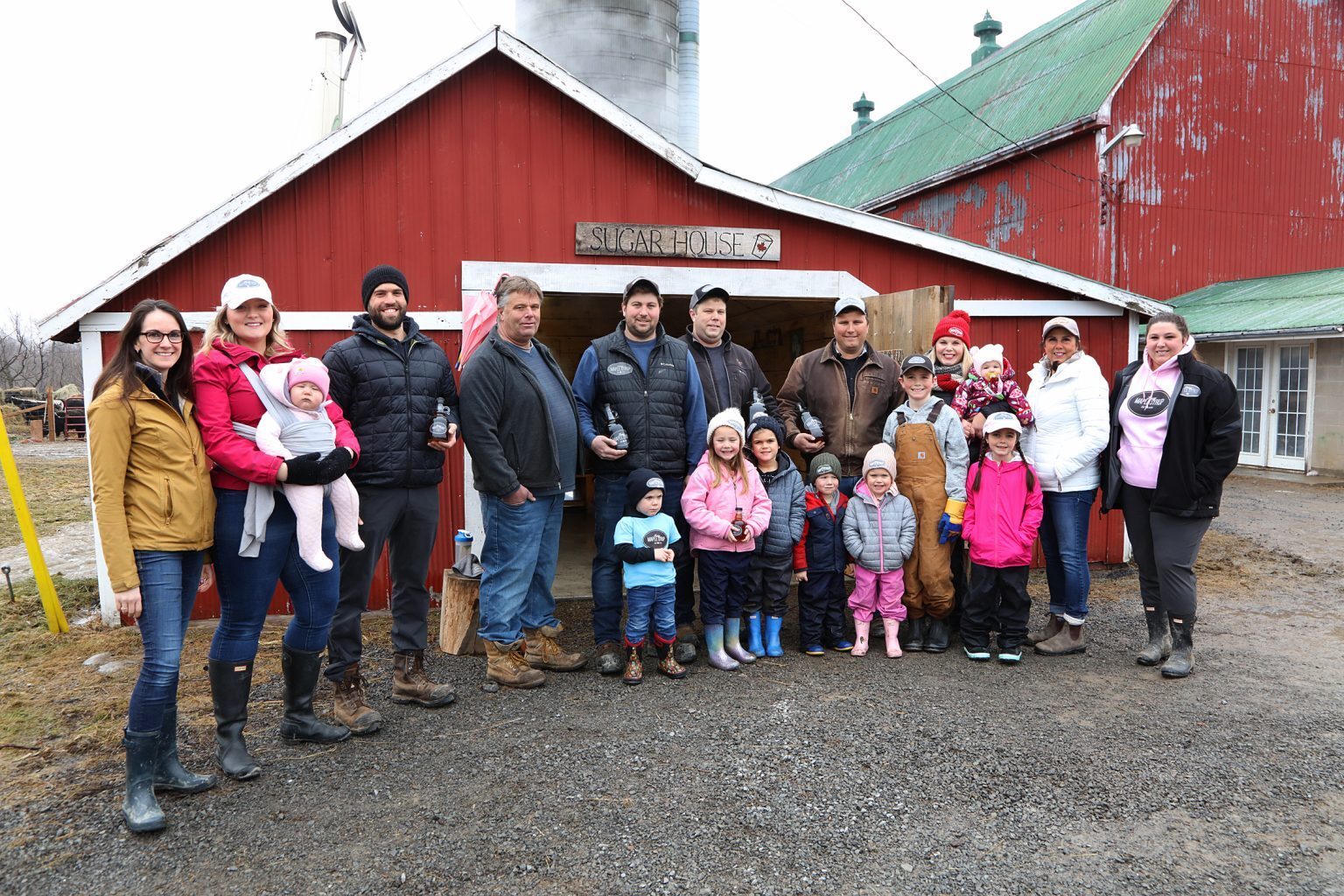
In the 1930s, the Kenny family tapped the maple trees on their dairy farm on Brewers Mills Road in Kingston. The farm has remained in the Kenny family ever since. And while the family’s maple syrup operation wound down in the 1970s, as they moved onto other farming endeavours, the great-grandchildren of the original farmers revived the practice in 2014. And for the last eight years, the Kenny brothers – Braden, Lyndon, Keaton, and Hudson – have honed their maple syrup business, applying their mechanical, engineering, chemistry, and carpentry skills to modernize the collection and distillation of maple sap.
In 2014, Braden Kenny was visiting his wife’s family and saw his father-in-law making a small batch of maple syrup on a propane boiler. “I didn’t actually know the process [of syrup-making],” Braden says, but when he got home, he tried it himself, tapping a few trees in the 40-acre maple bush on the family farm. There were still a few sap-collection buckets lying around from the older operation.
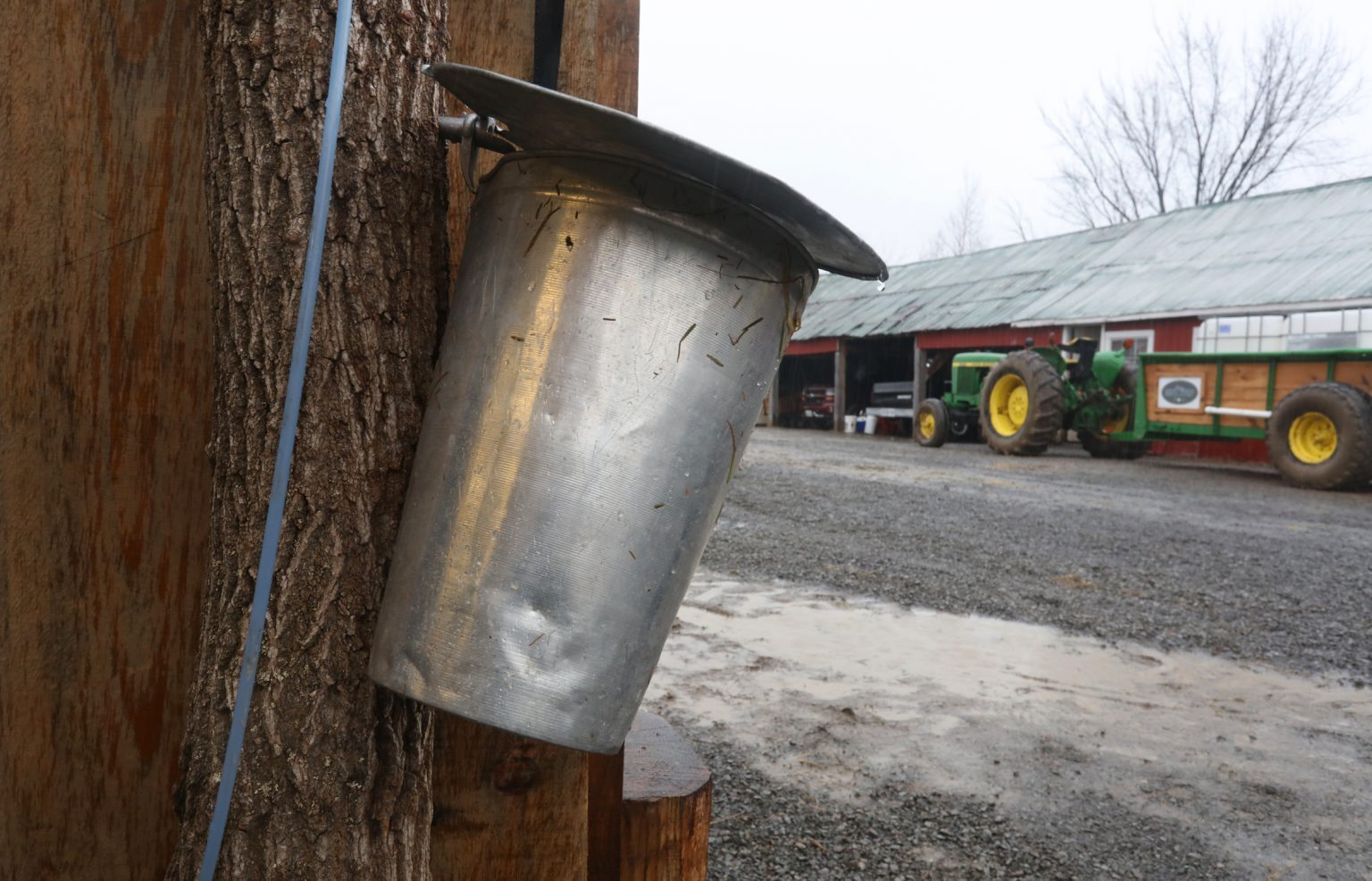
“We ended up making a litre or two of syrup,” he says. “And it was kind of fun. So, we expanded it the next year, and then the year after that, and I got my brothers involved.”
It takes about 40 litres of maple sap to make one litre of syrup. Some maple trees may give a litre of sap in a day. And for the best strongest, sweetest sap, it takes a cold winter, and a slow spring, freezing at night and warm in the day. That gets sap flowing, ready for tapping in March.
Locally, 2022 has been a good year for the maple sap. Braden says, “This year, our sugar content is well over two brix – that’s the how they measure the density of the sap.” [One brix is equal to about 1 per cent sugar content.]
The Kennys now have about 900 trees on their property tapped, with peripheral plastic lines tapped from individual trees feeding into larger lines that run 4,000 feet down the length of the maple bush. The lines move the sap, via a 12-volt vacuum pump system – a creation of Braden’s – into a large holding tank. It’s a much more efficient system than using sap-collection buckets.
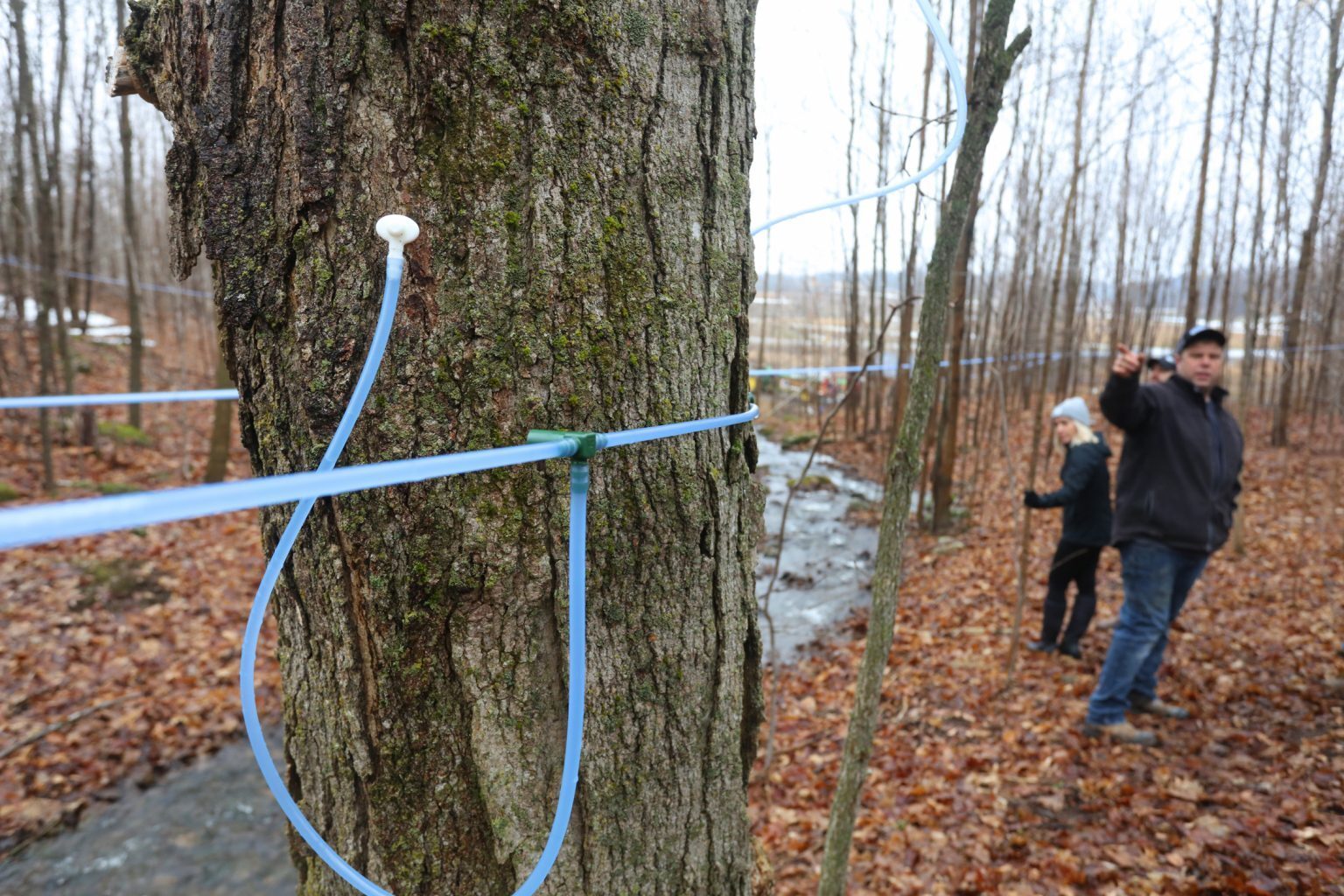
But just because much of the sap collection has been streamlined, that doesn’t mean that it’s an automated operation. The plastic lines through the sugar bush need to be checked daily for damage by squirrels, falling branches, or other hazards that can disrupt the slow, steady collection of sap. This can turn into a group activity for the Kenny family on the weekend, with the kids running through the maple bush helping to check the lines for damage.
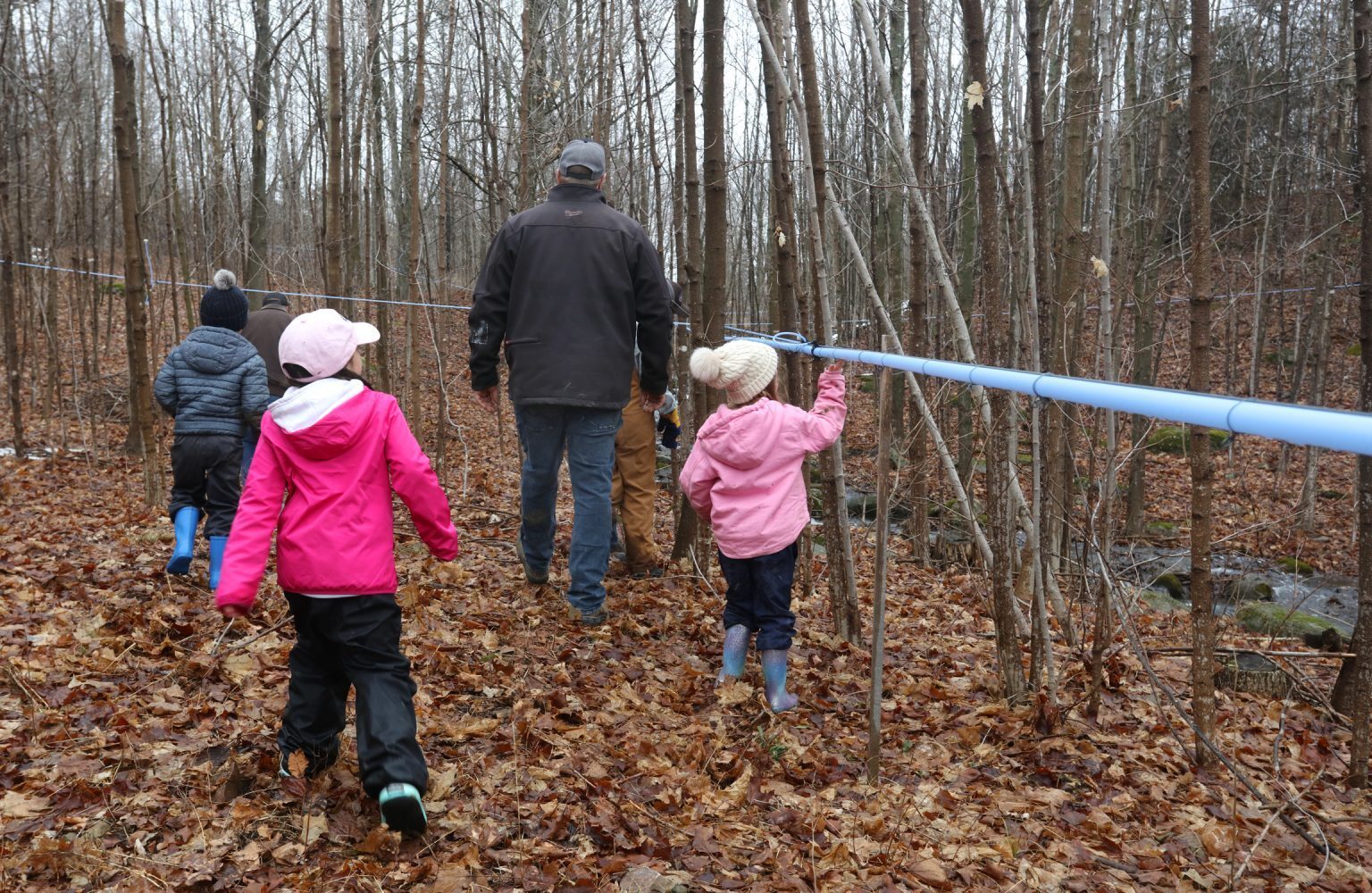
Once collected, maple sap is run through a reverse osmosis machine, to remove some of the water before the sap goes to the evaporator. Reverse osmosis saves a lot of time in the syrup-making process. But there are some corners that can’t be cut in creating a rich maple syrup. The boiling process takes hours, and it requires constant supervision. The Kennys use maple wood for the evaporator, and the fire needs to be consistently stoked with wood to maintain a steady heat while the sap is boiled down into syrup before it is filtered and bottled. (The wood used in the fire serves another purpose: it’s dead wood taken from the maple bush to make room for healthy trees to grow.)
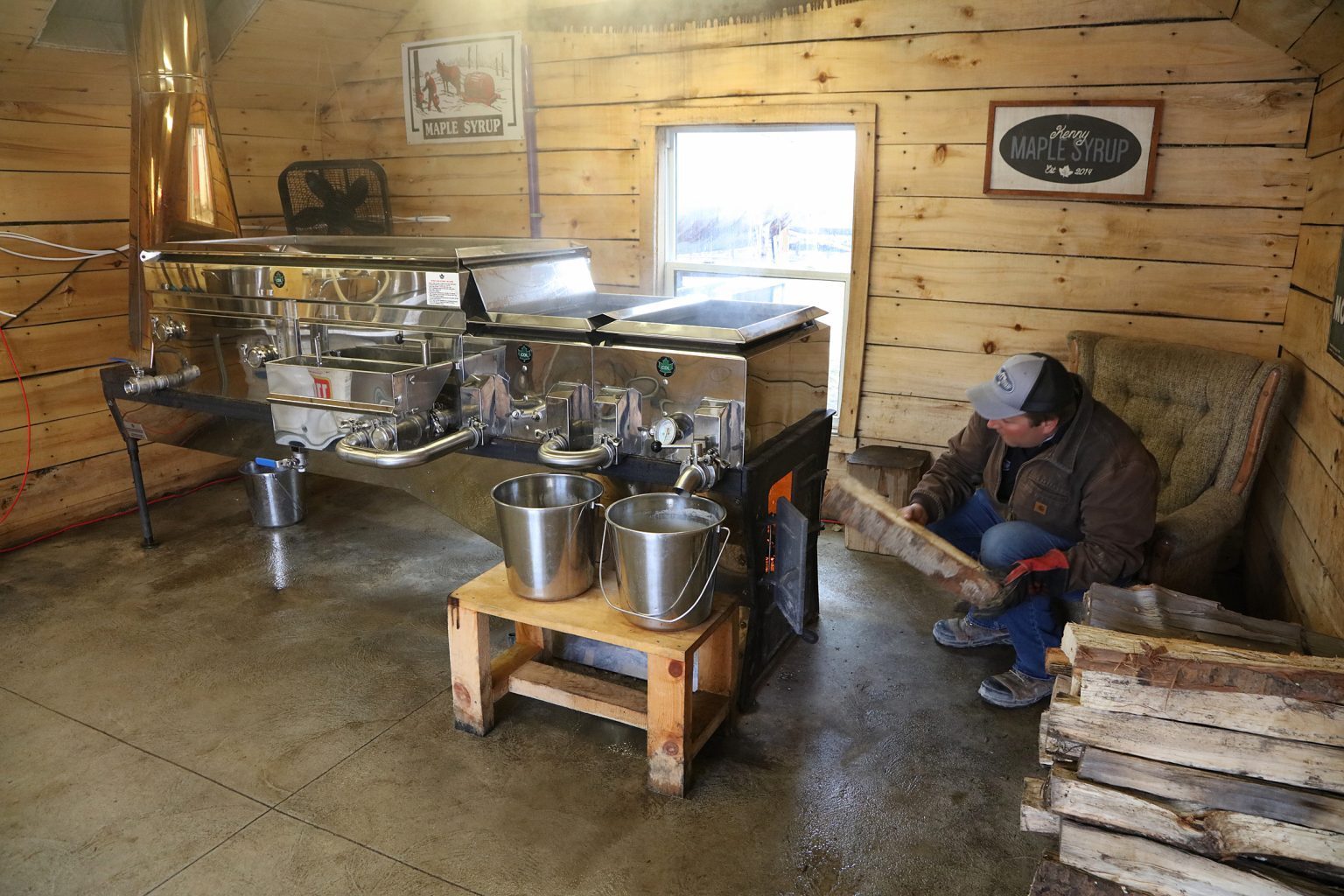
It’s a long process, but one that is worth the wait. And in the extended Kenny family, there’s a role for kids in performing quality assurance on the syrup as it’s being made.
“They always want to taste-test the syrup,” laughs Braden. “When it’s coming up hot, that’s when it’s best. And they know to ask what the [evaporator] gauge is at: ‘Is it seven yet?’ That’s seven degrees above the boiling point of water. That’s when it becomes syrup.”
You can try it yourself. In Kingston, Kenny maple syrup is available for purchase at the Visitor Information Centre at 209 Ontario Street.
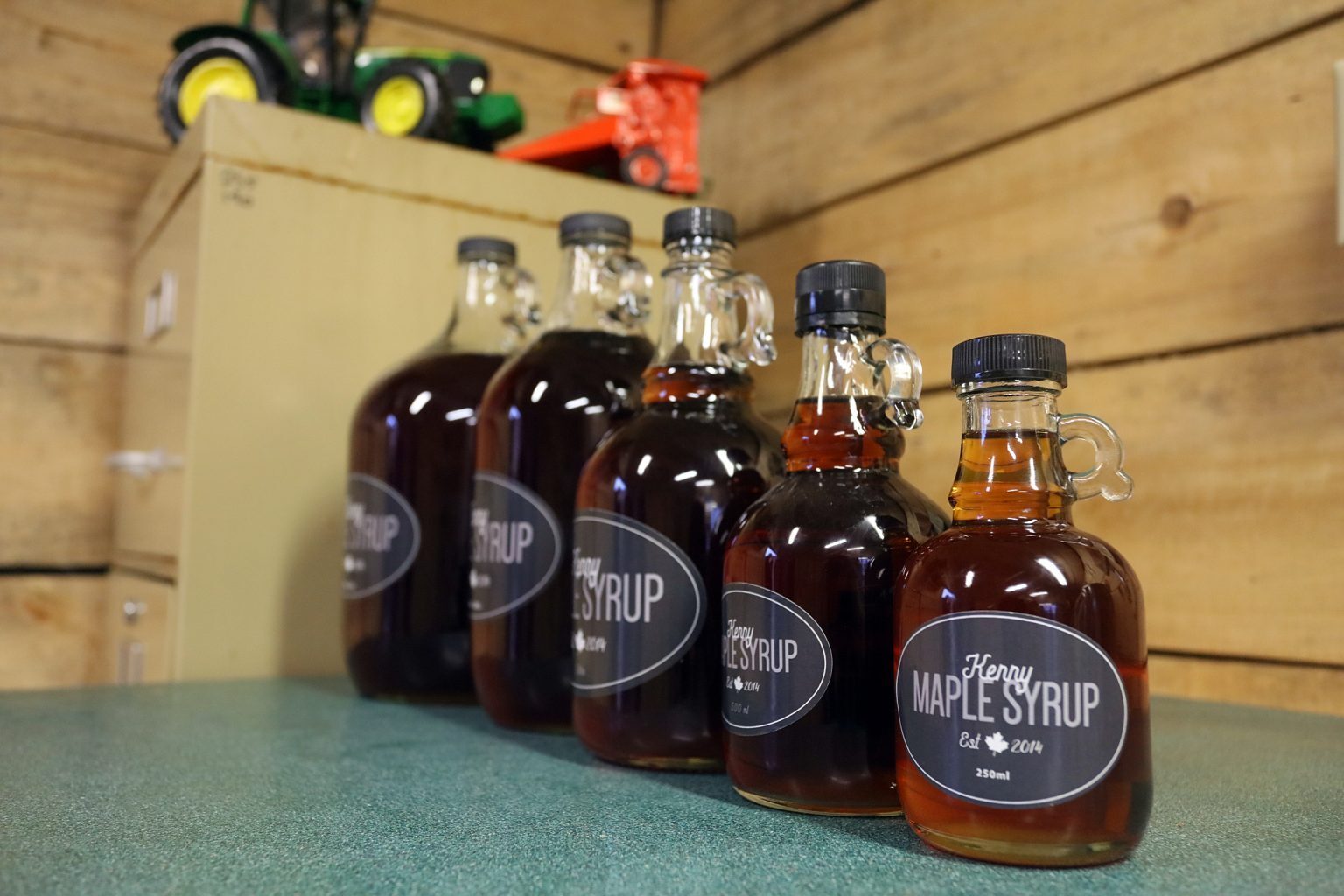
Photos by Bernard Clark
Kenny Maple Syrup Facebook